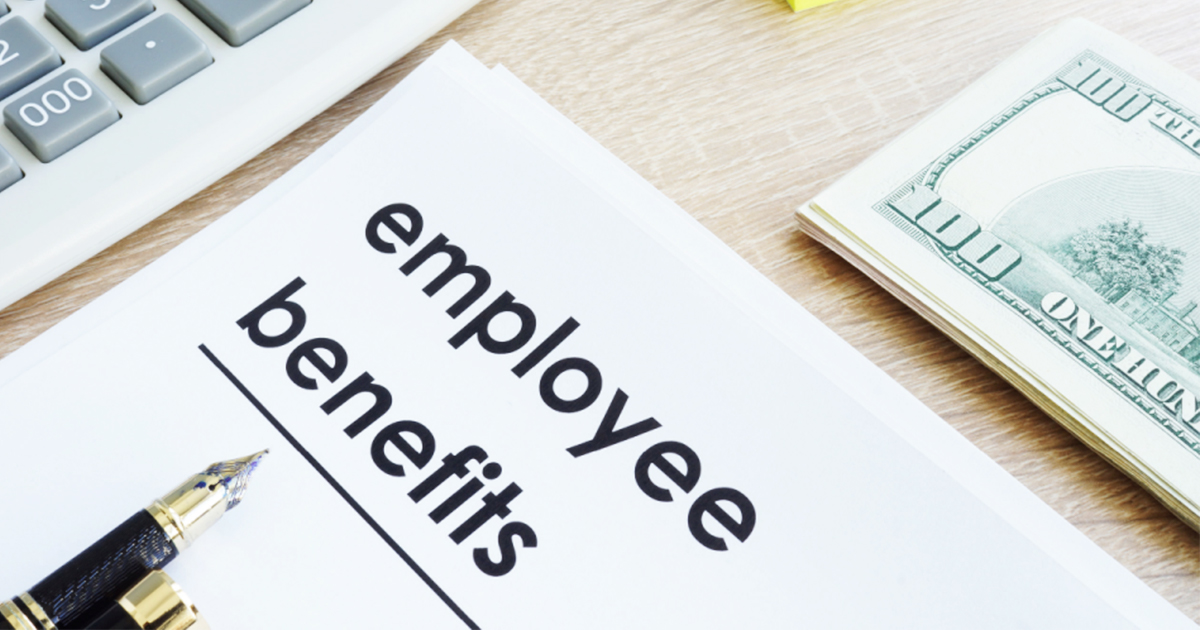The majority of Americans don’t have access to affordable legal services. When the World Justice Project measured the accessibility and affordability of civil justice in 113 countries around the world in 2017, the United States tied for 94th place with Cameroon, Uganda and Zambia.1
This rating measures whether “ordinary people” can resolve their grievances affordably in our justice system. Many find the rating shocking because it not only shows how far we must go as a country to provide access to affordable legal help, but also how widespread this problem is. Contrary to popular belief, it’s not just low-income people who can’t get the help they need with their legal problems. In fact, one study estimated that 60 percent of the legal needs of middle-income people are not being met.2
Legal insurance is one solution that many employers are using to provide their employees access to legal services. For a reasonable price, a legal insurance plan connects people with attorneys who can offer a range of legal services, from telephone advice to court representation. Note that, unlike some other suggested solutions to the access to justice issue, legal insurance works to increase access to attorneys — not replace them.
As lawyer and leading legal technology consultant Robert Ambrogi of Lawsitesblog.com puts it, “One very clear strength of legal insurance is that it is a solution that involves lawyers. It enables consumers to get legal services from qualified lawyers at prices they are more likely to afford.3
In addition, the ABA Commission on the Future of Legal Services concluded that “legal insurance…can provide more affordable legal services while also helping individuals recognize when their problems have legal solutions.”4
They key to understanding why legal insurance is an ideal solution lies in getting to the root of the access to justice problem.
Why People Aren’t Turning to Attorneys to Help
Americans have come to think of the legal system as “a highly undesirable final option,” something to be
used only “when all other possible solutions have been exhausted.”5 One American Bar Foundation study found that only 24 percent of people with civil justice problems used an attorney. These were people dealing with “troubles that emerge at the intersection of civil law and everyday adversity, involving work, finances, insurance, pensions, wages, benefits, shelter, and the care of young children and dependent adults, among other core matters.”6 In other words, they were dealing with everyday legal matters that could almost always benefit from an attorney’s guidance.
Yet they don’t use attorneys. Many don’t trust them. An ABA focus group found that many Americans view “poor customer service as a strategic imperative” of attorneys and see working with attorneys inside the legal system as “time-consuming, prohibitively expensive, impersonal, inefficient and intimidating.”7
Another study found that one in five people believe they can, with enough time and research, harness the knowledge and expertise of a trained lawyer.8 People are going online and trying to handle these issues alone instead of working with a professional. This is a concern for several reasons: it most certainly means people are not getting the best legal outcomes and when people represent themselves, it slows down the already struggling courts and justice system even more for all of us.
- Three out of five legal consumers go online to investigate and resolve their legal issue.9
- One in five legal consumers believes that with enough time and research they can “harness the knowledge and expertise of a trained lawyer.”10
Cost is another factor that stops people from working with attorneys. A National Center for State Courts study found that “while three-quarters of judgments [in civil courts] are smaller than $5,200, the expense of litigation often greatly exceeds that amount.”11 Many working-class Americans might look at that and think, “Why even go to the trouble of taking legal action if I’m going to lose money?”
Even for a situation that doesn’t involve litigation but does require an attorney, the expense can prohibit many people from getting legal help. When asked about their ability to pay for an unexpected legal expense, 76 percent of people surveyed had no defined way to pay for it. They also underestimated the average cost of an attorney by nearly $150 an hour.12 Many are overwhelmed at the thought of legal costs because the total amount can be so varied — there is no way to know, they think, if their legal issue will cost them a few hundred or a few thousand dollars.
76% of people have no defined way to pay for an unexpected legal expense.13
How Legal Insurance Helps
Legal insurance removes many of the barriers between attorneys and potential clients. Because we know consumers are looking online for legal information, we provide online resources that educate legal plan members on the importance of working with an attorney. We walk them through the process of connecting with an attorney so that they become more comfortable using attorneys for a wide variety of legal issues. All of this without increasing the burden on attorneys to be more accessible to clients.
Perhaps most important, legal insurance helps with financial barriers by standardizing the cost for individuals. For a low monthly premium, they get access to attorneys when they need legal help. It’s a monthly cost they can put into their budgets and plan for. Not only does this save them money, it also decreases their stress — 90 percent of legal plan members feel having a legal insurance plan reduces their overall stress.14
“Having a legal insurance plan prompted me to take an action I’d been putting off – updating our will!” – Michael L., Harleysville, PA
Attorneys also benefit from more people having legal insurance — with the financial uncertainty removed, people are more likely to use an attorney’s services instead of trying to resolve an issue on their own. Legal insurance also helps attorneys meet constantly expanding consumer expectations by giving them tools and resources to help streamline their business development, billing and client experience. Automated systems for referrals and payment plus ongoing educational opportunities help attorneys on a legal insurance network remain competitive, grow their business and retain existing clients.
More than 90% of people with legal insurance are more likely to consult with an attorney as situations arise (as compared to if they didn’t have legal insurance).15
“Legal insurance has made the process more convenient, less stressful and less expensive.” – Shon H., Charlotte, NC
California attorney Tom Martin has been an attorney on legal insurance networks for 10 years. The networks have helped him build his business “because there’s a steady influx of very qualified clients,” Martin says. “The type of clients I gain are generally college-educated and have an employer they have the plan through.”
Texas attorney Paul Wright believes another benefit of being a member of a legal insurance network is that it “exposes the firm to numerous individuals we’d never have met and opens the door to long-term client relationships.” He goes on to talk about how legal plans not only connect attorneys with plan members, but those members will turn around and refer their family and friends.
A Solution for the Legal Community and Beyond
Legal insurance is a solution that benefits more than just the attorneys and members using their services. Access to affordable legal help can have a domino effect on businesses and communities.
One in four organizations currently offer legal plans to their employees.16
Businesses have realized employees’ lack of access to legal services has a critical impact on their businesses. The stress of handling legal issues can lead to employee absenteeism, low productivity and high turnover.
An ARAG study17 found that:
- 71 percent of people experiencing legal issues feel stressed about figuring out how to resolve those issues.
- 68 percent of employees spend time at work dealing with legal issues.
- But when employers offered legal insurance, 90 percent of plan members felt their stress was reduced, leading them to become more productive.
With employees getting the legal support they need, they are more productive and less stressed. In turn, this improves employers’ bottom line and helps them recruit and retain the type of high-caliber workforce they want.
The impact of affordable legal help extends beyond the corporate world — it affects all areas of a community. Take the issue of domestic violence for example, which does not discriminate based on income or status. One in four women and one in seven men will be a victim of domestic physical abuse in their lifetime.18
Access to legal services is critical for domestic violence victims — it helps them build new, safe lives. One University of Wisconsin study concluded that a $1 million investment in providing victims of domestic violence legal assistance could yield more than $9 million in benefits to victims and the communities they live in by managing the cost of medical care, mental health, property damage, loss productivity and lost quality of life.19
All that money saved is invested back in the community, which means everyone reaps the benefits.
Improving Access in the Future
The satisfaction of legal insurance plan members, employers who offer the benefit and attorneys who participate on the network is resounding. Why then isn’t the use of legal insurance more widespread? Many aren’t aware of what legal insurance is — or that it exists. Some confuse it for discounted legal services. Others think it must be malpractice insurance for attorneys.
If more Americans become aware that legal insurance is an option for them — and more attorneys realize the benefits and join legal plan networks, perhaps in the not-too-distant future America will see its ratings for access to affordable civil justice rise from the bottom of the list to the top, near countries like Germany, Denmark and the Netherlands — all countries that offer, support and promote legal insurance.
1 Agrast, Mark David, Juan Carlos Botero, & Alejandro Ponce. The World Justice Project Rule of Law Index 2017-2018. Washington, D.C.: The World Justice Project, 2018.
2 Rhode, Deborah. “Access to Justice: Connecting Principles to Practice.” Georgetown Journal of Legal Ethics 17 (2004): 369-422.
3 Ambrogi, Robert. “Exclusive: New Nationwide Legal Insurance Plan Aims to Reduce the Justice Gap.” 7 Apr. 2016. http://www.lawsitesblog.com/2016/04/exclusive-new-nationwide-legal-insurance-plan-aims-reduce-justice-gap.html.
4 “Report on the Future of Legal Services in the United States.” Commission on the Future of Legal Services: American Bar Association. 2016. 3 worldjusticeproject.org/who-we-are.
5 GBA strategies focus groups for American Bar Association conducted on 16 Apr. 2015.
6 Sandefur, Rebecca L. Accessing Justice in the Contemporary USA: Findings from the Community Needs and Services Study, 2014 ABA, Aug. 2014.
7 GBA strategies focus groups for American Bar Association, conducted on 16 Apr. 2015.
8 Kabiri, Nika. "Sink or swim: How to adapt to the New Legal Consumer." 2016. Avvo.
9 Ibid.
10 Ibid.
11 “Call to Action: Achieving Civil Justice for All. Recommendations to the Conference of Chief Justices by the Civil Justice Improvements Committee.” National Center for State Courts, 2016.
12 “How Legal and Financial Stress Impacts Employee Wellness.” Russell Research for ARAG. February 2017.
13 Ibid.
14 2016 ARAG Plan Member Satisfaction Survey.
15 2016 ARAG Plan Member Satisfaction Survey.
16 “2016 Employee Benefits: Looking Back at 20 Years of Employee Benefits Offerings in the U.S.” The Society for Human Resource Management. June 2016.
17 How Legal and Financial Stress Impacts Employee Wellness.” Russell Research for ARAG. February 2017.
18 National Coalition Against Domestic Violence statistics. https://ncadv.org/statistics
19 “Bridging the Justice Gap: Wisconsin’s Unmet Legal Needs.” State Bar of Wisconsin Access to Justice Committee. March 2007.
© 2019. Legal Service Plans Are a Win-Win for Attorneys and America’s Middle Class, Published in GP Solo Magazine, Vol. 36, Iss 1, January/February, 2019 by the American Bar Association.Reproduced with permission. All rights reserved. This information or any portion thereof may not be copied or disseminated in any form or by any means or stored in an electronic database or retrieval system without the express written consent of the American Bar Association or the copyright holder.



